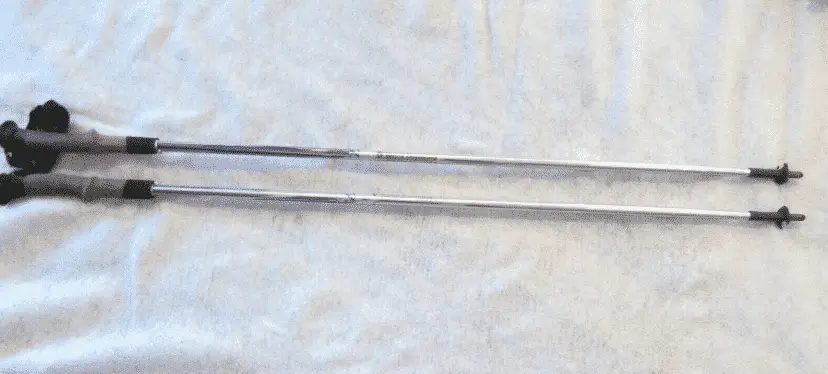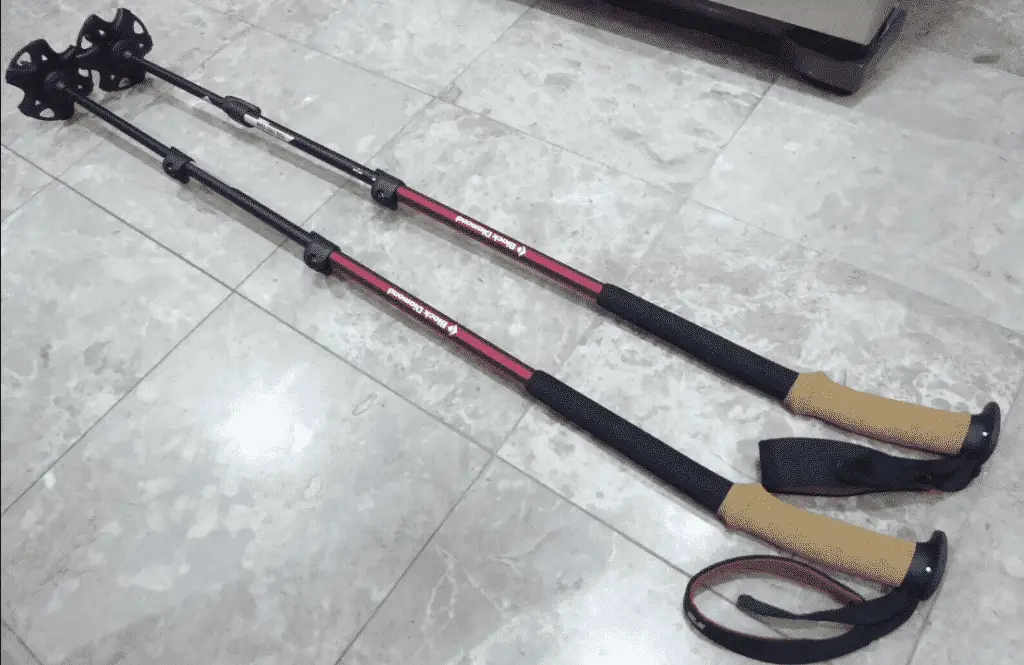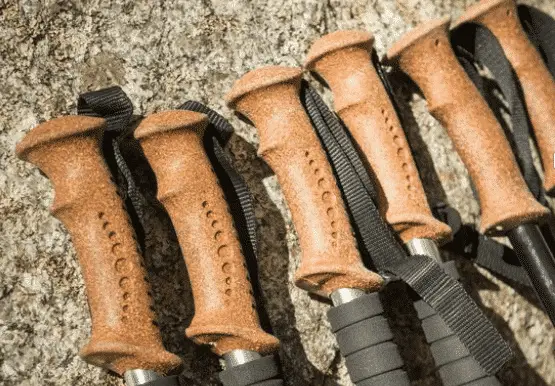With so many options on the market, it’s hard to choose your first pair of trekking poles. Although they serve the same basic function there’s a major difference between fixed and adjustable length trekking poles.
As with most things in life, there’s no one correct style to choose from. It all depends on your hiking style and what kind of terrain you’re navigating. Here are a few of the differences between fixed and adjustable length trekking poles.
Fixed vs Adjustable Length Trekking Poles
When looking through all the trekking pole options available you’ll have to choose between fixed and adjustable length poles. Honestly, the style you choose doesn’t make much of a difference. They serve the same basic function and can be used interchangeably.
Personally, I prefer fixed length poles for local hikes and adjustable length poles for traveling. While fixed-length poles are better for backpacking(much lighter), adjustable poles are way more versatile. Before you buy trekking poles ask yourself these basic questions.
Adjustable length poles are so much easier to travel with. If you’re flying or busing to your destination you need to choose fixed length trekking poles. They’re just so much easier to work with.
I prefer fixed length poles on local hikes. They’re much lighter and basically foolproof. You don’t have to worry about the locking mechanism(there isn’t one) freezing up or slipping.
You have to go with adjustable length poles if you’re using them to setup your shelter. They just offer way more versatility when trying to adjust the height of your shelter.
Heavy people should really reconsider purchasing adjustable length trekking poles. When I was at my heaviest(around 260lbs) my adjustable length poles would fail regularly.
Although they’re supposed to be used mostly for balance, they occasionally have to support your entire body+pack weight. The locking mechanism in adjustable poles just isn’t strong enough.
Walking through a store with fixed-length pole is a serious pain in the butt. You can’t strap them to your pack because you end up bumping into everything so you end up carrying them the entire time. It’s so much easier to just collapse your adjustable poles and latch them to your pack.
I love to use trekking poles when navigating through hills and difficult terrain, but sometimes you just want to ditch the poles. When using fixed-length poles you’re basically stuck with them. Need your hands to climb a steep scramble? You’re gonna have long poles dangling off your back.
Fixed Length Trekking Poles

This might be an unpopular opinion, but I personally prefer fixed-length Trekking Poles. Since they have fewer parts they tend to be much lighter than adjustable poles. When 90% of my hikes are on local trails the lighter fixed length poles just make sense.
They’re just so much easier to work with than adjustable length poles. I’m not constantly adjusting the height on hills and messing around with the locking mechanism.
Just find a pole that suits your height (look at the chart below) and you’re good to go. When walking on flat ground or downhill hold onto the top of your poles and grab the lower section when going uphill. It’s so much easier than stopping to adjust the length of your pole, which I never seem to do with adjustable poles.
Fixed Length Pole Length
| Height | Suggested Pole Length |
| < 5ft 1in | 39 inch (100cm) |
| 5ft 1inch-5ft 7 inch | 43 inch (110cm) |
| 5ft8inch-5ft11inch | 47 inch (120cm) |
| 6ft+ | 51 inch (130cm) |
Main Drawbacks of Fixed Length Trekking Poles
There are two main disadvantages to fixed length trekking poles. They’re hard harder to stow in your pack and way less versatile.
Since the pole is matched to your height you can’t just lend your pole to a friend. They have to be basically the same height as you for this to work. You’ll also have a harder time using them to setup your shelter since you won’t be able to adjust the height.
If you’ll be traveling you’ll definitely need a set of adjustable poles. Although most major airlines will allow you to check trekking poles good luck with that. They just end up getting destroyed on the conveyor belts.
If you do decide to travel with fixed length poles head down to your local Home Depot and buy a 4 inch PVC pipe for a couple of dollars. Glue one cap on the bottom and put a threaded cap on the top.
Adjustable Length Trekking Poles

Adjustable trekking poles are extremely versatile, but you have to be willing to regularly adjust them. Most hikers start off their day regularly adjusting poles but eventually get lazy.
You also need to know the proper time to adjust your poles and what height to set them at. Improperly adjusted poles can actually cause more stress to your body.
Adjustable length trekking poles generally adjust from 24 inches to 55 inches long so they can be used by almost anybody. It’s really nice to be able to make adjustments as the terrain changes.
- General Hiking on Flat Terrain: For general hiking on flat terrain most people adjust their poles so your arm makes a 90-degree bend at the elbow. Set your top section to the middle for further adjustments and use the bottom sections to set your height.
- Longer Uphill Sections: On long up hill sections shorten your poles 2-4 inches depending on how steep the trail is. Steep sections will require shorter poles that will allow you to pull yourself up the hill. You should never feel any strain and pulling on your shoulders.
- Longer Downhill Sections: When heading downhill lengthen your poles 2-4 inches. Longer poles take the pressure off your knees on downhill sections.
Main Drawbacks of Adjustable Poles
Adjustable poles are way more versatile than fixed-length but they have two major drawbacks. They will be way heavier than fixed-length poles and the joints will eventually slip/fail. You can usually tighten up the locking mechanism with an Allen wrench, but that’s not very helpful out on the trail.



